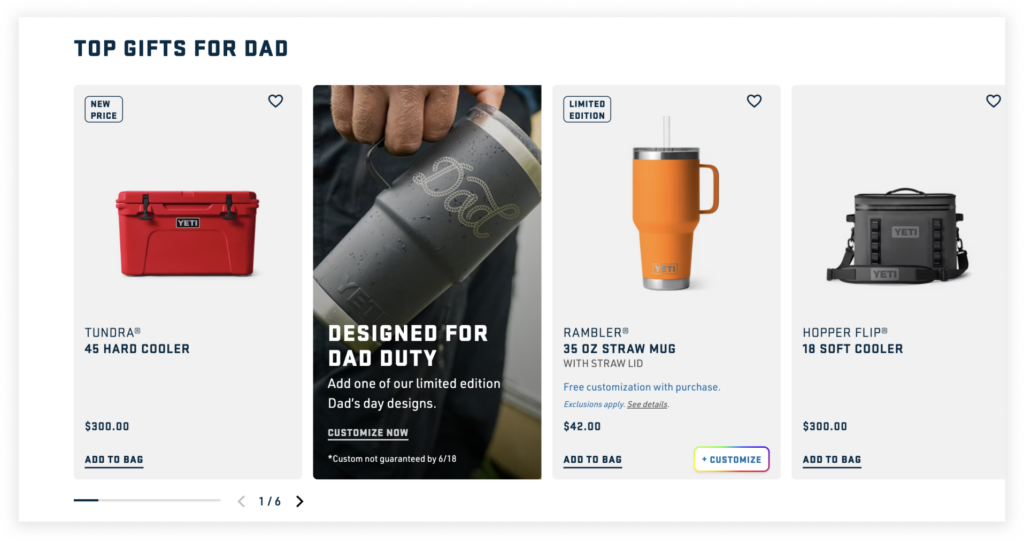Don’t Underestimate Product
In recent years, we’ve too often encountered brands focusing more on the mode and style of communication than on the quality of the product or service and their physical and mental availability. It’s therefore essential to remind that the product and service are the primary solutions to a customer’s problem or desire and carry the real value. A well-designed functional product ultimately leads to repeat purchases. The role of communication is not to defend the product but to lead customers to it and continuously refresh the memory structures associated with it.
Even if you don’t sell your own product in your e-shop, you can do your homework and select only those products you truly believe in. A good example is the fashion e-shop Freshlabels, which provides customers with detailed information about the sustainability of individual brands and products, in addition to classic product categorization. Moreover, the e-shop communicates transparently about the range and attributes it uses to determine sustainability, thus giving the customer the most detailed source of information for an informed purchasing decision.

Watch the trends, but don’t embrace every one of them
In an era oversaturated with trends, it’s increasingly challenging to maintain your own identity and find the right balance between consistency and fluidity. However, the need to adapt often leads brands to engage in senseless activities simply because they are trendy. While capitalizing on what’s currently popular is a favorite tool of marketers, it’s crucial to emphasize that it might not always bear the desired fruit.
To maximize current themes, you must be able to recognize which trends align with your brand and use them to your advantage while remaining true to your immutable foundations.
It’s important to recognize that for better memorability and spontaneous preference for your brand, staying consistent in the use of elements that branding experts Byron Sharp and Jenni Romaniuk refer to as brand assets (brand codes) is key. Thanks to these, customers can instantly recall your brand in different situations and contexts, distinguish your communication, and intuitively reach for your e-shop and products rather than the competition. We’re not just talking about visual assets such as logos, colors, typography, or graphic elements.
Verbal, character, and sound assets are gaining importance. Sound branding, in particular, is experiencing a huge boom worldwide, and it’s not surprising. It offers the opportunity to engage another of the target group’s basic senses (hearing), thereby creating effective brand recognition and, more importantly a stronger emotional connection between the consumer and the brand. Integrating sound branding into your brand’s identity requires careful selection of sounds, voices, and melodies that will not only sound good but will also be conceptually linked with the rest of the brand’s identity. This integration of sound and visual stimuli can help you stand out from the grey average of competitors and imprint in your customers’ minds on a completely new level.
Build a Community
The essence of e-commerce is digital. Yet, that shouldn’t prevent you from seeking a deeper connection with your customers. Creating and expanding a community around your e-shop is tremendously important for brand building. It’s key to understand the needs and lifestyles of your customers, bringing you closer to them and better meeting their requirements.
Engage in events that matter to them or even host your own. Be part of your customers’ experiences, transforming them from occasional shoppers into devoted fans. Do you run an e-shop with kitchen equipment? Organize a cooking school or find an opportunity to collaborate with a well-known chef or cooking show, or put together an interesting cookbook. Operate an electronics store? Invite customers to a meet-up to unveil the latest smartphone features or organize an online or offline workshop where they can learn to take the most beautiful photos with their phones.
Find inspiration from brands that have already done it right. One of them is Sephora, whose Beauty Insider Community is a platform where beauty enthusiasts can gather to discuss products, share advice, and provide reviews. This approach has helped Sephora create a strong community of loyal customers who are engaged and frequently contribute valuable content and feedback.

Know Your Segment’s Standard and Pay Attention to Details
Success in e-commerce often lies in the details. Factors such as delivery speed, a good product range, hassle-free returns, and competitive prices significantly influence customer satisfaction and the purchase decision itself. It’s crucial to understand the standard in your segment and, ideally, to exceed it. Is your delivery speed comparable to the competition? Do you offer customers the option to comfortably return goods, even beyond the legal requirements? Do you have a clear product offering and a wide range of payment methods, including convenient Google Pay or Apple Pay? Is your website fast and its navigation intuitive? Do you use advanced methods to determine the correct size based on body type or other practical features?
While these might seem like minor details, they can ultimately determine whether a customer will repeatedly spend their money with you. Keep up with market standards and stay ahead of the curve. You can take inspiration from global giants like About You or Zalando, who offer free returns up to 100 days after purchase, or Amazon, capable of delivering goods from evening to morning. And what if you can’t provide similar benefits? Simply find a way to turn a disadvantage into an advantage.
Develop a communication narrative that explains longer delivery times or a limited product range, similar to what the Hodinkee Shop does. Their curated collection of watches provides a mix of vintage treasures and contemporary timepieces from the most respected names on the market and as they say, “You’ll never see a watch in the shop that we couldn’t proudly – and honestly – endorse ourselves.”
Be Different
Original communication, unique packaging, and innovative features of your e-shop offer the opportunity to differentiate from the competition and find a special place in the hearts and minds of your customers. Encourage them to experiment with your products through interactive gadgets like the IKEA planning & design tools, Eyerim’s Magic Mirror, Virtual Dressing Room, or outfit inspirations on Zalando. Spark their desire to share their orders on social networks through polished packaging or practical items in the package. Strive to stand out and don’t just communicate the functional benefits and prices of products.
For example, you could leverage the concept of “Category Entry Points (CEPs)” by Byron Sharp and focus your communication on where, with whom, with what, when, and why a consumer might need or use your products. Take inspiration from brands like YETI, which offers camping gear and equipment. It distinguishes itself from the competition not just by communicating the specific design, features, and prices of its products, but by positioning fathers as a key entry point for the entire product category.

With one of their mottos “Designed for dad duty,” it perfectly reflects who, with whom, where, and when their product is used, appealing to its customers in a unique way. By shifting from a product-oriented approach to one focused on needs, situations, and opportunities when a customer may need your brand, you can find new communication messages and significantly differentiate from the competition.






